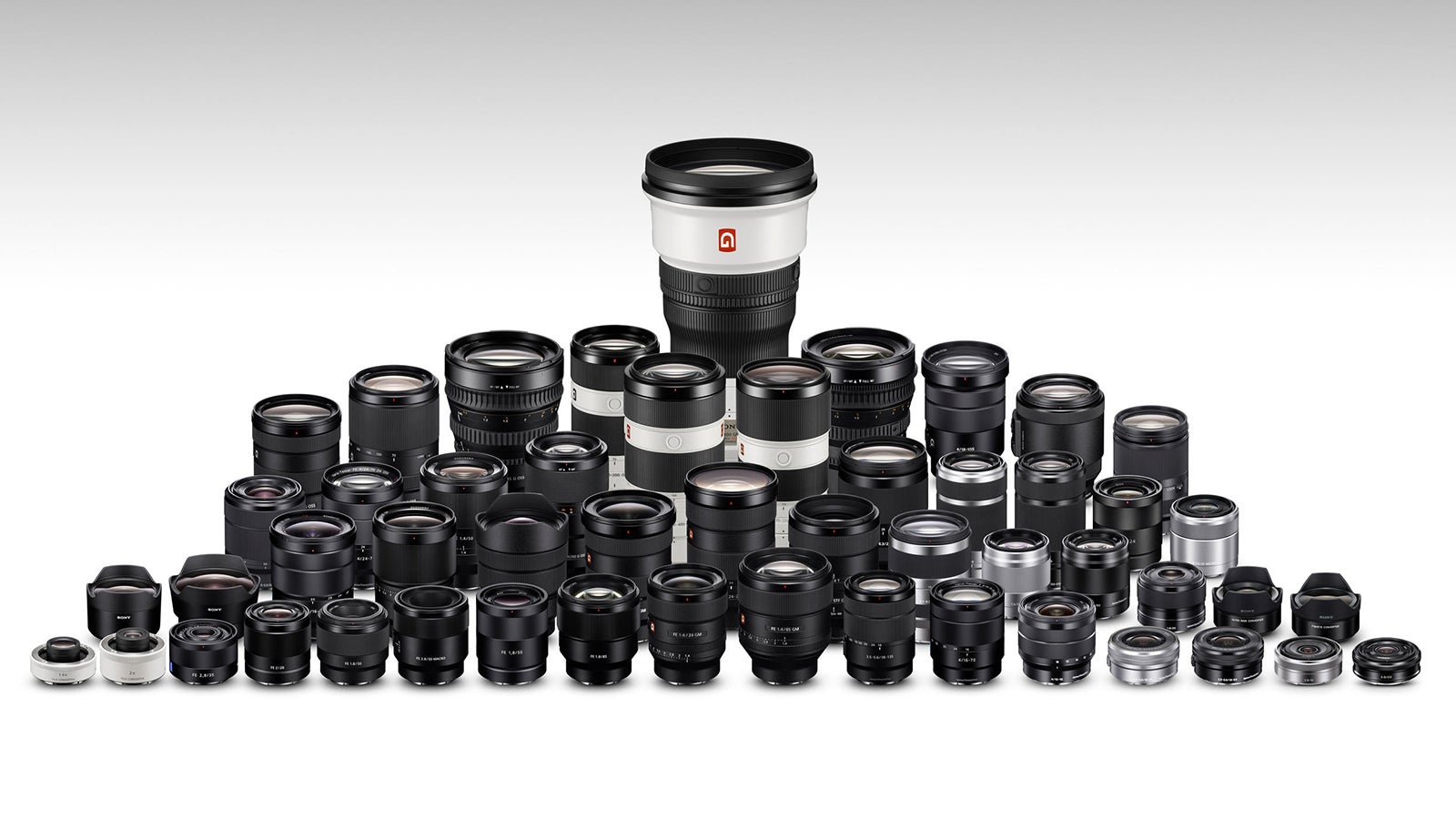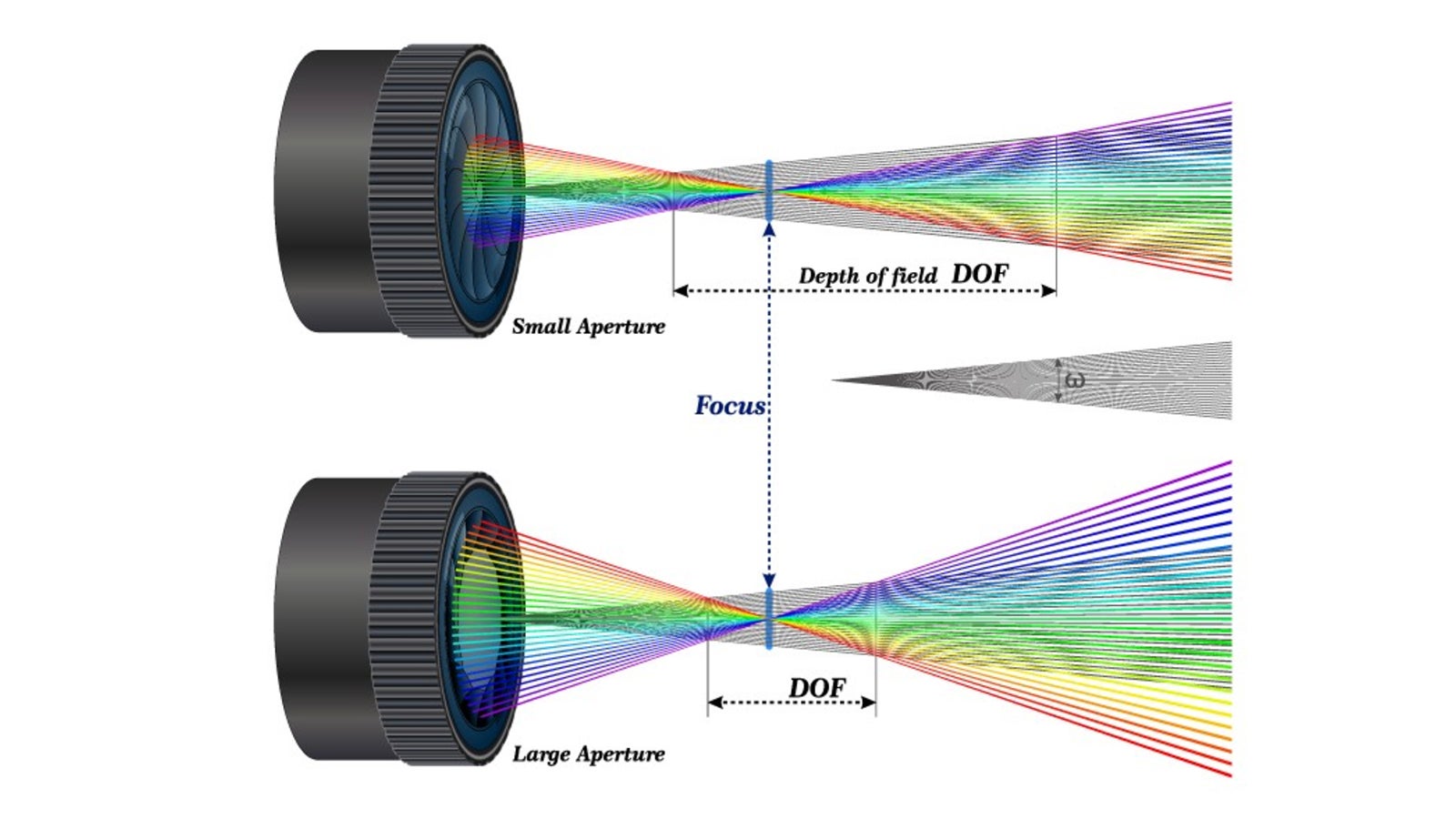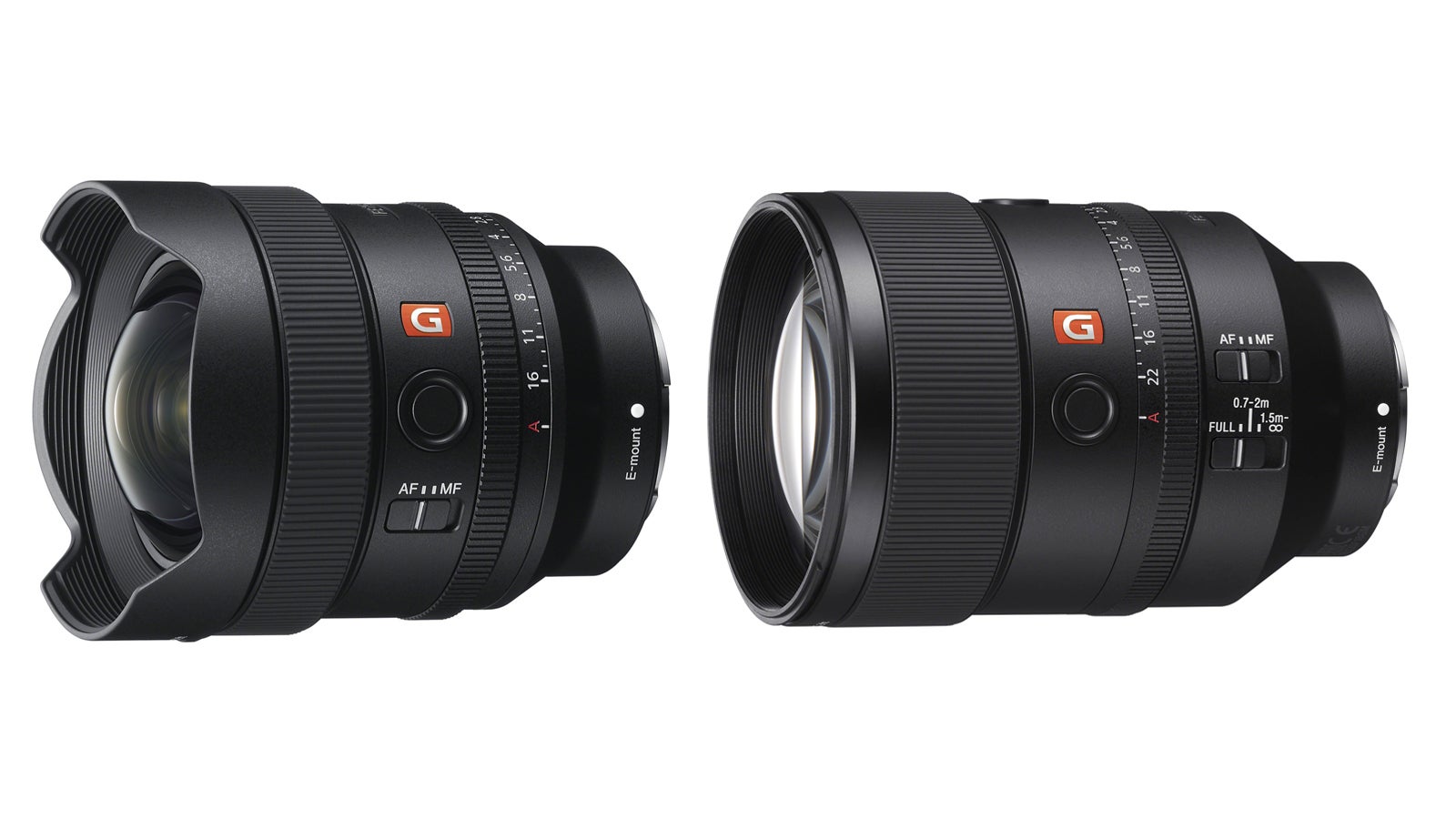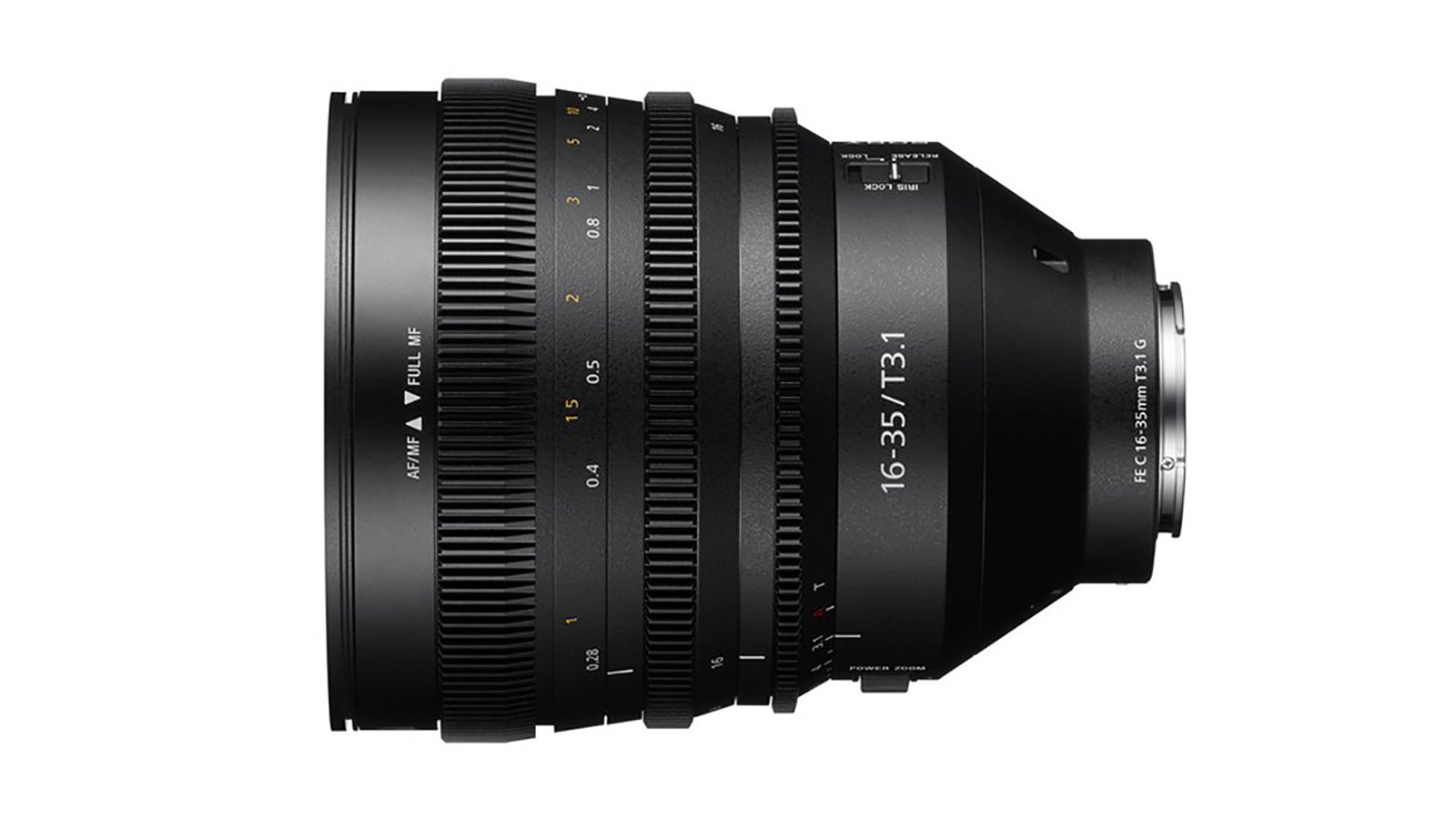
05-17-2021 - Gear, Technology
How Lens Choice Affects Focus
By: No Film School
In collaboration with No Film School.
There's more to lens choice than you may think.
An important element when considering a lens for your film is its range of focus: the most razor-sharp point of the image. What the camera is focused on guides the viewer's eye and tells them what to pay attention to within the frame. The ability to use and manipulate focus throughout your work can be incredibly powerful in eliciting a subconscious or even a visceral reaction in your viewer.
Beyond the practicality of using focus to show information on the screen, filmmakers can also use focus to evoke emotions by hiding or revealing elements, building suspense, and surprising the audience. One way to do this is through a rack focus, which is a filmmaking technique when the focus changes during a continuous shot, perhaps revealing something that was obscure before.
Another way is intentionally leaving something out of focus. A blurry, shadowy character approaching the in-focus main character from behind, for example, is going to build suspense because the audience can’t see the shadowy figure’s details, and the audience is emotionally invested in the main character because the focus is only on them.
Other ways of using focus include creating a sense of loneliness or showing someone's importance or superiority. Understanding focus as a storytelling tool can open up a lot of creative options for your films.
That said, let's dive into how lens choice affects focus and how different characteristics of a lens can impact your decision when choosing a lens.

Sony has over 60 E-mount manual or AF lenses. Frame grab above by Jeff Berlin made on the Servicevision Scorpio 75mm 2X FFA anamorphic lens
Manual Focus vs. Autofocus
An important factor to consider when choosing a lens is how it captures focus: manually or with autofocus. Manual focus (MF) allows you to control the focus by rotating the ring on the lens to find your desired point within the frame. You can turn the ring yourself or you can have someone assist you. That person is called an assistant camera (AC) or focus puller, whose main job is to focus-pull throughout the shot.
An assistant camera can either stand next to the camera and rotate the focus ring using a focus wheel that is attached to the lens barrel or remotely using a wireless lens control system. Whether staying focused on one subject or racking to different things within the shot, manual focus allows you more control over the visual style.
Autofocus (AF) is a feature that is available on some lenses that will automatically find or “hunt” for the subject’s focus. Autofocus uses a sensor, a control system, and a motor to focus on an automatically or manually selected point or area. It's ideal for a lot of applications, especially if you're a single shooter needing to track something moving or if you're shooting live and don’t have time to prepare or redo moments.
Autofocus is helpful in point-and-shoot situations like capturing your sister walking across the stage at her graduation. It’s great if you can capture that using manual focus, but there is no shame in using autofocus to ensure this one-time moment is captured sharply. The downside of autofocus is that you are essentially relying on a computer, and you lose the ability to manually control what you are focused on. Or worse, if the motors are slow to find focus, you can end up with an entirely blurry image.
All lenses have the ability to manually focus. In some cases, a lens will have both manual and autofocus available. If you have one of these lenses, you can access which you’d like to use in the camera settings, or often there is a switch featured on the barrel that allows you to flip between the two.
In many cases, components and software that support autofocus are found in both the lens and the camera body that work together. Some autofocus lenses are even camera-dependent, and they only work with certain camera bodies. When it comes to the Sony line of E-mount lenses, the autofocus capabilities are simply fantastic, even in low light. While Sony is known for its quick autofocus abilities, its lenses need to be used with Sony cameras. When you adapt them to other cameras, the autofocus may not be available.
While it is strongly encouraged to use manual focus in creative filmmaking, there is a time and place to use autofocus to ensure proper focus for your needs. In addition to the technical ways of achieving desired focus, another important element that affects focus is the depth of field.
Autofocus is helpful in point-and-shoot situations like capturing your sister walking across the stage at her graduation. It’s great if you can capture that using manual focus, but there is no shame in using autofocus to ensure this one-time moment is captured sharply. The downside of autofocus is that you are essentially relying on a computer, and you lose the ability to manually control what you are focused on. Or worse, if the motors are slow to find focus, you can end up with an entirely blurry image.
All lenses have the ability to manually focus. In some cases, a lens will have both manual and autofocus available. If you have one of these lenses, you can access which you’d like to use in the camera settings, or often there is a switch featured on the barrel that allows you to flip between the two.
In many cases, components and software that support autofocus are found in both the lens and the camera body that work together. Some autofocus lenses are even camera-dependent, and they only work with certain camera bodies. When it comes to the Sony line of E-mount lenses, the autofocus capabilities are simply fantastic, even in low light. While Sony is known for its quick autofocus abilities, its lenses need to be used with Sony cameras. When you adapt them to other cameras, the autofocus may not be available.
While it is strongly encouraged to use manual focus in creative filmmaking, there is a time and place to use autofocus to ensure proper focus for your needs. In addition to the technical ways of achieving desired focus, another important element that affects focus is the depth of field.
Spherical vs. Anamorphic
The two major lens types are spherical and anamorphic, appropriately named after the types of glass “elements” inside the lens bodies. Spherical lenses are constructed with round glass elements that produce uncompressed images. Anamorphic lenses add cylindrical glass elements to the front of the lens, and when light passes through, the image is squeezed, creating a compressed image that provides a wider aspect ratio than spherical lenses.
You can easily identify an anamorphic lens if the glass appears to be oval-shaped when looking down the barrel. The way light passes through each lens creates different characteristics that can affect the image, as well as focus. Here are some things to pay attention to when deciding between spherical or anamorphic lenses.
Sharpness and Distortion
Spherical lenses are known to produce sharper images with minimal distortion across the image since light has fewer glass elements to pass through to reach the camera’s sensor. These lenses display a lifelike, vivid, and clear picture, which leans toward telling a realistic or raw type of story. Anamorphic lenses are known to be less sharp and have increased distortion and softness near the edges of an image, called “falloff." Anamorphics produce more dreamlike or experimental images, which may lean toward telling a personal or physiologically emotional story.
Bokeh
Bokeh is the soft, out-of-focus area of the image. Spherical lenses have circular-shaped bokeh, while anamorphic lenses have unique oval-shaped bokeh.
Lens Flares
Anamorphic lenses have more glass for light to bounce around inside, which causes more dramatic lateral lens flares, while spherical lens flares are circular. Each lens will carry its own lens flare characteristics, where anamorphic lenses tend to produce blueish or greenish flares.

Depth of Field (DOF)
To help understand focus, let’s talk about depth of field (DOF).
Depth of field is the distance between the closest and farthest objects in a photo that appears acceptably sharp. It is how much of your shot appears in focus beyond the point at which the camera is focused, AKA the focal point.
A deep depth of field means a larger area is in focus in front or behind the focal point. For example, wide establishing shots and landscapes are usually shot with a deep depth of field so everything is in focus. To film with a deeper depth of field, shoot at smaller lens apertures like F11, F16, F22.
A shallow depth of field means a small area is in focus beyond the focal point. For example, if filming a closeup of writing on a page and you want the viewer to pay attention to a specific word, use shallow depth of field to focus on one aspect while the rest falls out of focus. To film with a shallow depth of field, shoot at a wider aperture like F1.4, F2.8, F4.
Imagine filming at the park, and the focal point is set on a tree surrounded by people in front and behind the tree. A shallow depth of field would allow only the tree to be in focus and everyone in front and behind it to be blurred out, while a deep depth of field would allow the tree and the people in front and behind the tree to be in focus.

How Aperture Size Affects Depth of Field
Aperture is how big the opening is that lets in light. Similar to how the eye’s pupil works, the bigger the opening, the more light comes in; the smaller the opening, the less light is coming in. This amount of light entering the lens is measured by f-stops.
F-stops work as inverse values, so a smaller f-stop number (F1.4) correlates to a larger or wider aperture that lets in more light, which results in a shallow depth of field.
For example, F1.4 has a larger aperture and will create a brighter image with more isolated focus. A larger f-stop number (F22) correlates to a smaller aperture that lets less light in, which results in a deeper depth of field. For example, F22 has a smaller aperture and will create a darker image that is mostly in focus.
How Distance Affects Depth of Field
The subject’s distance from the camera also affects the depth of field. The closer the subject is to the camera, the shallower the depth of field. Remember that depth of field is the distance between the closest and farthest objects in a photo that appears acceptably sharp. If you are focusing on a subject that is only a foot away from the camera, everything behind the subject will fall out of focus more drastically since the camera can only focus on one thing at a time.

Sony lenses come in a number of focal lengths - these are the Sony FE 14mm f/1.8 GM and Sony FE 135mm f/1.8 GM
Focal Lengths
Focal lengths affect focus and depth of field. To put it simply, the wider the focal length (18mm, 24mm, 32mm, etc.) the deeper the depth of field, meaning more of the image will be in focus. The narrower the focal length (85mm, 105mm, 135mm, etc.) the shallower the depth of field, meaning the image is less in focus.
Depth of Field vs. Depth of Focus
While they sound similar, depth of field and depth of focus are two different things, so be sure you are using the correct terminology.
Depth of field is all that filmmakers need to be concerned with because it is in regards to acceptable focus within the frame. Depth of focus is related to what the camera sensor sees and what is in focus behind the rear lens element, and honestly, only camera technicians need to worry about this.
Long story short, be sure to say "depth of field."

Sony's FE C 16-35mm T3.1 G E lens has a 140° focus throw
Focus Throw/Focus Rotation
Another thing to keep in mind when choosing a lens is how much rotation, or focus throw, a lens ring has. Focus throw is measured in degrees and represents the amount of rotation needed to turn a lens's focus ring from its minimum focus distance (which is the closest it's able to focus) to infinity (which is as far as it's able to focus). Ideally, you want a lens with a larger focus throw because it allows for a greater degree of accuracy and precise focus.
Traditional cinema lenses have larger focus throws allowing for a gradual, smooth change of focus. Today’s modern mirrorless lenses have shorter focus pulls than most vintage cinema lenses. This means when you pull focus, it may be more noticeable since the focus ring will need less movement to go the same distance, making it harder to control or possibly look jarring. When looking for a lens with the best possible focus ability, aim for one with a larger focus pull.
Conclusion
Many elements impact a film and contribute to visual storytelling, but the use of focus with its range of creative choices is one of the most powerful tools to keep in your arsenal. When choosing a lens, there is more to it than how it looks on screen. It's also important to know how you can achieve those looks out in the field.
The more you know your equipment and what it’s capable of, the more you’ll grow as a filmmaker.




